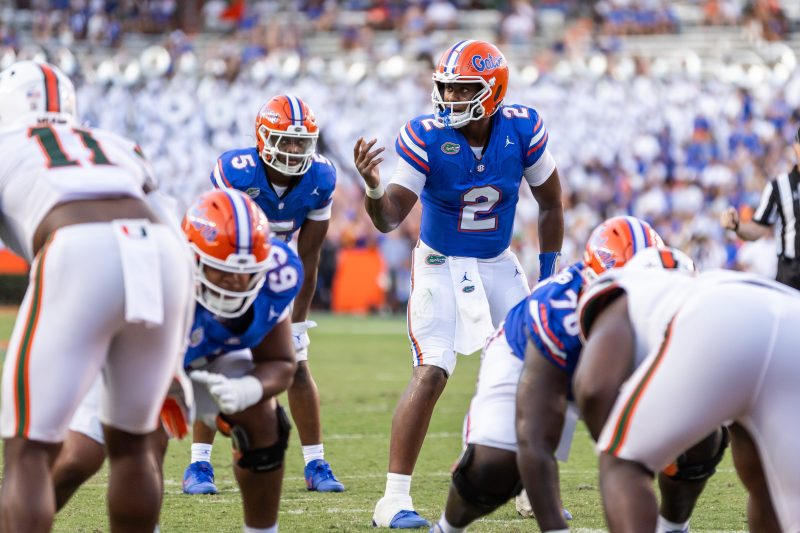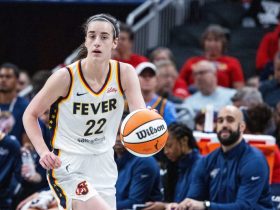How much capped revenue share money will each team within an athletic department receive? That’s left to schools to decide. Welcome to ‘Capology.’
Conventional wisdom will lead many schools to distribute most of their revenue share allotment to football and men’s basketball, but opportunities exist for deviations.
Schools’ autonomy opens the door for some outside-the-box spending ideation. Schools have the chance to identify and spend on the sports that matter most to their fans and school fabric.
They’re playing a new game at college athletic departments. We’ll call it “Capology,” and game play tasks athletic directors to be the banker.
A legal settlement approved June 6 authorizes schools to directly pay athletes from athletic department coffers in the form of revenue sharing, beginning July 1. That revenue sharing will be capped this year at about $20.5 million per school.
Athletes’ separate NIL deals brokered with outside entities won’t count against a school’s revenue share cap.
How much capped revenue share money will each team within an athletic department receive? That’s left to individual schools to decide.
Commissioners from the Power Four conferences plus the rebuilt Pac-12 confirmed their schools retain the authority to determine the percentage breakdown of how they’ll distribute their capped allotment with their teams.
Decisions, decisions, for athletic directors tasked to dole out the dough.
“Things get very political really quick of who gets what resources,” Mississippi State athletic director Zac Selmon said, “but I think you’ve got to continue to invest in programs that generate the revenue. That’s No. 1.
“And No. 2, would be, what’s the fabric of your school? For us, at Mississippi State, baseball is a huge deal.”
Selmon’s assessment holds true to the way many athletic directors view this: The top revenue-generating sports of football and men’s basketball will get the lion’s share of revenue share dollars – about 90% combined across the two sports – with a smaller fraction going to women’s basketball, and other bedrock sports that help form the school’s identity will receive the leftover dollars.
MAJOR BOOST: The teams that benefit from playoff expansion
BIG FALL: SEC propaganda campaign shows it’s no longer top playoff dog
Within the SEC, at least, it’s widely believed many schools will use a baseline distribution model that uses the settlement’s backpay formula as a guide. Using this model, about 75% of a school’s revenue sharing cap will go to the football program, with about 15% going to men’s basketball, 5% to women’s basketball, and 5% for other sports.
Those 75-15-5-5 percentages, though, are not mandated, either within the SEC or beyond.
The breakdown could vary, as an institution sees fit.
“Conference to conference, school to school, sport revenue share allocations will vary based on several factors,” Oklahoma athletic director Joe Castiglione said.
Schools’ autonomy opens the door for some outside-the-box thinkers to emerge within “Capology.’ This, too, is an opportunity for schools to identify and spend on the sports that matter most to their fans, and where they think they can win big.
‘We’re giving our institutions discretion,’ Big Ten commissioner Tony Petitti said, a sentiment echoed by the other power conference commissioners, ‘and they want that discretion.’
Conventional wisdom versus outside-the-box spending
Take Wisconsin, as an example.
The Badgers’ women’s basketball team last made the NCAA Tournament 15 years ago. Its robust volleyball program nearly doubles the women’s basketball team’s average attendance. Why shouldn’t Wisconsin zig where others zag and apply a higher percentage of its revenue sharing dollars toward volleyball, and less toward women’s basketball?
I’m thinking that rationale should apply, too, to Nebraska and Penn State, where powerhouse volleyball programs outperform and outdraw women’s basketball.
These Big Ten schools I’ve referenced have not disclosed their distribution percentage plan. I’m just spit-balling some “Capology” spending ideas that could allow schools to further excel in sports where they typically thrive.
Here’s another test subject: Florida women’s basketball last made a Sweet 16 in 1998, and its attendance limps behind SEC peers. The Gators’ softball program is a Women’s College World Series regular. Might Florida be better off spending less than SEC peers on women’s hoops and more on softball, in an attempt to gain separation in a diamond sport that enjoys relevance within the SEC?
In contrast, South Carolina and LSU shouldn’t put women’s basketball on the back burner. There, the women’s basketball teams outperform and outdraw their men’s counterparts. So, should the men’s programs really receive so much more in revenue sharing than the women?
“I think we need to be a little more generous than 5%,” South Carolina coach Dawn Staley told The State newspaper earlier this year, referencing the 5% baseline within the SEC for women’s basketball. “That’s my feel on it.”
Who could blame Staley for believing her team shouldn’t be shortchanged? It’s up to her institution, though, to decide how to divvy up the money. A school could even try to outspend South Carolina women’s basketball to try to accelerate past the Gamecocks.
Many schools will follow conventional wisdom on how dollars should be spent, but the opportunity exists to break from the mold.
Texas Tech revealed it plans to share 17 to 18% with its men’s basketball team, which reached the Elite Eight last season, and 2% to its women’s basketball team, which last reached the NCAA Tournament in 2013.
Priorities, right?
Football will receive most revenue share, but how much?
Consider a school that usually struggles in football. Should it allocate a smaller revenue share percentage to football than its peers and apply more money toward other sports? Perhaps, that’s worth mulling at schools where basketball or Olympic sports shine. Here’s an alternate idea: If you’re lagging in football, spend an even higher percentage of your allotment on football than the baseline, to try to close the talent gap.
Indiana showed how quickly a football team can transform from irrelevant to playoff qualifier in an era in which players may transfer without penalty.
Is it worth the risk to spend big, though, to play catchup, knowing that strategy would reduce the revenue share money available for other sports? That’s a question athletic directors must ponder.
Schools aren’t required to publicly disclose their distribution percentage plan, either, meaning one school won’t necessarily know exactly how its distribution model compares to another school.
Football revenues provide the financial lifeblood of college sports, but nothing says a basketball blueblood couldn’t spend less of its revenue share allotment on football, as compared to the industry standard, and outpace its peers on basketball spending.
“There will be some institutions that might give 60% to football and 20% to men’s basketball, or any variation one could think of,” Castiglione said, speaking in general terms and not in reference to a particular school. “That’s an institutional choice.”
Just another decision when playing “Capology.”
Blake Toppmeyer is the USA TODAY Network’s national college football columnist. Email him at BToppmeyer@gannett.com and follow him on X @btoppmeyer.










